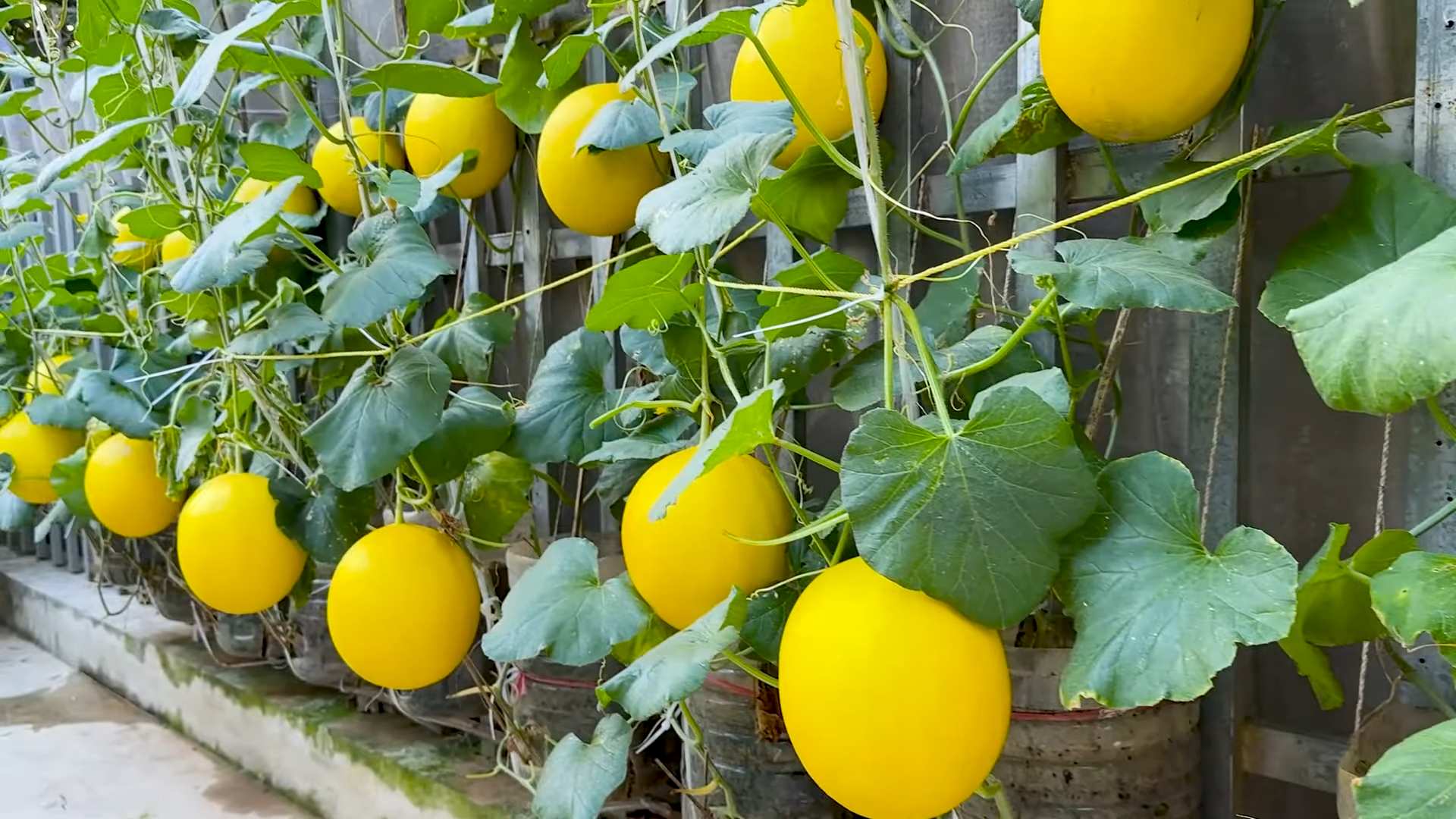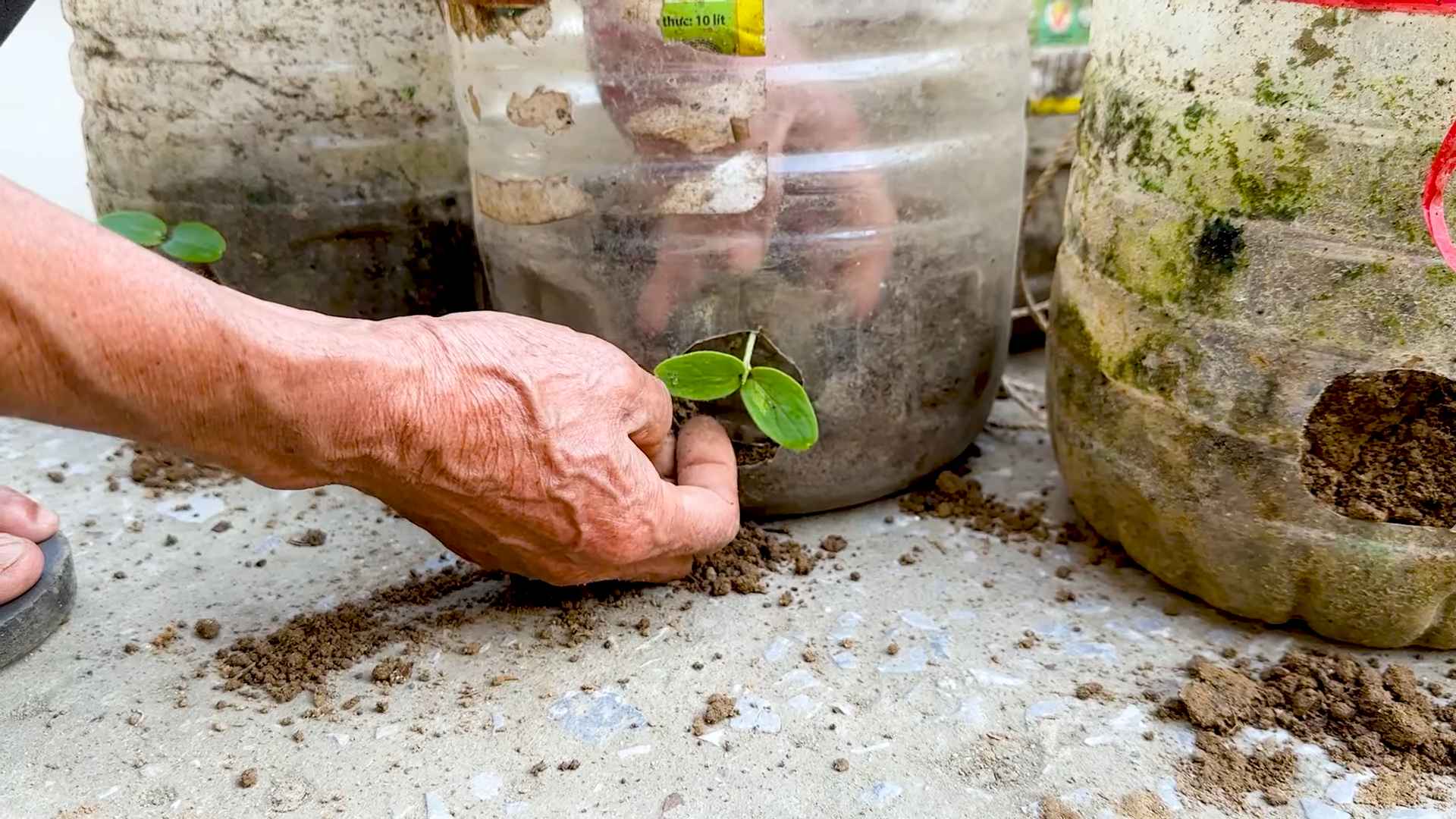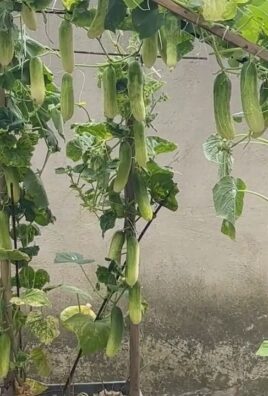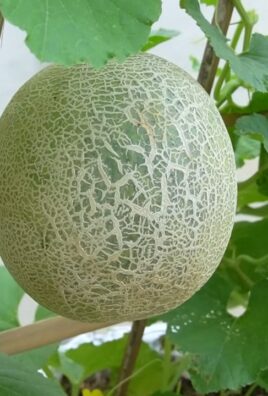Grow Giant Sweet Melons and impress your neighbors! Ever dreamt of slicing into a melon so large it feeds the whole family, and so sweet it tastes like summer sunshine? I know I have! This isn’t just about growing melons; it’s about cultivating a little bit of magic in your backyard. For centuries, melons have been symbols of abundance and prosperity, gracing royal tables and peasant gardens alike. From ancient Egypt to the sprawling farms of the American South, the quest for the perfect melon has driven innovation and passion.
But let’s be honest, achieving melon magnificence can feel daunting. That’s where these DIY tricks and hacks come in. Forget complicated gardening jargon and expensive equipment. I’m going to share simple, effective techniques that anyone can use to grow giant sweet melons, even if you’re a beginner gardener. Imagine the satisfaction of harvesting a prize-winning melon you nurtured from a tiny seed! These tips will help you overcome common challenges like pests, diseases, and inconsistent watering, ensuring a bountiful harvest of juicy, delicious melons. Get ready to roll up your sleeves and transform your garden into a melon paradise!

How to Grow Giant, Juicy Sweet Melons: My Foolproof Guide
Okay, let’s talk melons! I’m obsessed with growing my own, especially those ridiculously huge, incredibly sweet ones that make your jaw drop. It’s not as hard as you might think, but it does take some planning and a little bit of effort. But trust me, the reward of biting into a melon you grew yourself, that’s bursting with flavor, is totally worth it. This guide is based on my own experiences, so I’ll share all my secrets for getting those prize-winning melons.
Choosing the Right Variety
First things first, you need to pick the right melon variety. Not all melons are created equal when it comes to size and sweetness. Here are a few of my favorites for growing giants:
* ‘Carolina Cross’: This is a classic for a reason. It’s known for producing massive watermelons, often exceeding 100 pounds! The flesh is sweet and red, perfect for summer picnics.
* ‘Charleston Gray’: Another watermelon heavyweight, ‘Charleston Gray’ is oblong in shape and has a light green rind. It’s also quite disease-resistant, which is a bonus.
* ‘Cantaloupe Hale’s Best Jumbo’: If you’re more of a cantaloupe person, this variety is your best bet for size. It produces large, heavily netted cantaloupes with a rich, sweet flavor.
* ‘Honey Dew Green Flesh’: For a honeydew option, this one is a winner. It produces large, smooth-skinned melons with a pale green flesh that’s incredibly sweet and juicy.
Preparing Your Garden Bed
Melons are hungry plants, so soil preparation is key. They need a lot of nutrients and good drainage to thrive. Here’s how I get my garden bed ready:
* Sunlight: Melons need at least 6-8 hours of direct sunlight per day. Choose a spot in your garden that gets plenty of sun.
* Soil Testing: Before you do anything, test your soil. You can buy a soil testing kit at most garden centers. This will tell you the pH level and nutrient content of your soil. Melons prefer a slightly acidic soil, with a pH between 6.0 and 6.8.
* Amending the Soil: Based on your soil test results, amend the soil accordingly.
* Compost: Add plenty of compost to the soil. Compost is a great source of nutrients and helps improve drainage. I usually add a few inches of compost to the entire bed.
* Aged Manure: Aged manure is another excellent soil amendment. It’s rich in nutrients and helps improve soil structure. Be sure to use aged manure, as fresh manure can burn the plants.
* Fertilizer: I also like to add a slow-release fertilizer to the soil. Choose a fertilizer that’s high in phosphorus and potassium, which are essential for fruit development. Look for a fertilizer with an NPK ratio like 5-10-10.
* Creating Mounds: Melons prefer well-drained soil, so I like to create small mounds in the garden bed. This helps prevent the roots from sitting in water. The mounds should be about 12 inches high and 2-3 feet wide.
Starting Your Melon Seeds
You can either start your melon seeds indoors or direct sow them in the garden. I prefer to start them indoors, as it gives them a head start and protects them from pests and diseases.
* When to Start: Start your melon seeds indoors about 4-6 weeks before the last expected frost.
* What You’ll Need:
* Seed starting trays or pots
* Seed starting mix
* Heat mat (optional, but recommended)
* Grow lights (optional, but recommended)
* How to Start:
1. Fill the seed starting trays or pots with seed starting mix.
2. Moisten the soil.
3. Plant 2-3 seeds per cell or pot, about 1/2 inch deep.
4. Cover the seeds with soil and gently water.
5. Place the trays or pots on a heat mat (if using) and under grow lights (if using).
6. Keep the soil moist but not soggy.
7. Once the seedlings emerge, thin them to one plant per cell or pot.
Transplanting Your Melon Seedlings
Once the danger of frost has passed and the soil has warmed up, it’s time to transplant your melon seedlings into the garden.
* Hardening Off: Before transplanting, you need to harden off the seedlings. This means gradually exposing them to outdoor conditions. Start by placing them outside for a few hours each day, gradually increasing the amount of time they spend outdoors.
* Transplanting:
1. Choose a cloudy day to transplant your seedlings. This will help prevent them from getting stressed.
2. Dig a hole in the mound that’s large enough to accommodate the root ball.
3. Gently remove the seedling from the tray or pot.
4. Place the seedling in the hole and backfill with soil.
5. Water the seedling thoroughly.
6. Space the plants about 2-3 feet apart.
Caring for Your Melon Plants
Once your melon plants are in the ground, it’s important to provide them with the care they need to thrive.
* Watering: Melons need consistent watering, especially during hot, dry weather. Water deeply and regularly, aiming for about 1-2 inches of water per week. Avoid overhead watering, as this can lead to fungal diseases. Drip irrigation is the best way to water melons.
* Fertilizing: Continue to fertilize your melon plants throughout the growing season. Use a fertilizer that’s high in phosphorus and potassium. I like to side-dress my plants with compost tea every few weeks.
* Weeding: Keep the garden bed free of weeds. Weeds compete with the melon plants for nutrients and water.
* Pruning: Pruning can help improve air circulation and encourage fruit development. Remove any suckers (small shoots that grow from the base of the plant) and any yellowing or diseased leaves.
* Pollination: Melons need to be pollinated in order to produce fruit. If you’re not seeing any fruit set, you may need to hand-pollinate the flowers. To hand-pollinate, use a small paintbrush to transfer pollen from the male flowers to the female flowers. The female flowers have a small fruit at the base of the flower.
* Supporting the Fruit: As the melons grow larger, they may need support to prevent them from breaking off the vine. You can use slings made from old t-shirts or pantyhose to support the fruit.
* Pest and Disease Control: Keep an eye out for pests and diseases. Common melon pests include aphids, squash bugs, and cucumber beetles. Common melon diseases include powdery mildew and fusarium wilt. Treat any problems promptly with organic pest control methods or fungicides.
The Secret to Giant Melons: Fruit Thinning
This is where the magic happens! To get those truly giant melons, you need to thin the fruit. This means removing some of the smaller melons so that the plant can focus its energy on growing the remaining ones.
* When to Thin: Thin the fruit when the melons are about the size of a softball.
* How to Thin: Choose the healthiest-looking melon on each vine and remove the rest. Leave only one or two melons per vine. This may seem drastic, but it’s essential for growing giant melons.
Harvesting Your Melons
Knowing when to harvest your melons is crucial. You want to pick them when they’re perfectly ripe for the best flavor.
* Watermelons:
* Thump Test: A ripe watermelon will sound hollow when you thump it.
* Ground Spot: The ground spot (the area where the melon rests on the ground) should be yellow or cream-colored.
* Tendril: The tendril closest to the melon should be brown and dry.
* Cantaloupes:
* Aroma: A ripe cantaloupe will have a sweet, musky aroma.
* Stem Slip: The stem should easily slip from the vine when the melon is ripe.
* Color: The skin should be a golden-tan color.
* Honeydews:
* Aroma: A ripe honeydew will have a slightly sweet aroma.
* Blossom End: The blossom end (the opposite end from the stem) should be slightly soft.
* Color: The skin should be a creamy white color.
Enjoying Your Harvest
Congratulations! You’ve grown your own giant, juicy

Conclusion
So, there you have it! Unlocking the secret to growing truly giant, sweet melons isn’t about magic; it’s about understanding the plant’s needs and providing the right environment and support. This DIY trick, focusing on strategic pruning, targeted feeding, and dedicated vine management, is a game-changer for anyone serious about melon cultivation. It’s more than just gardening; it’s a rewarding journey that culminates in a harvest of epic proportions and unparalleled sweetness.
Why is this a must-try? Because it empowers you to take control of your melon’s destiny. Instead of passively waiting for nature to take its course, you actively shape the plant’s growth, directing its energy towards producing fewer, but significantly larger and sweeter fruits. Imagine the look on your friends’ faces when you present them with a melon that dwarfs anything they’ve ever seen! The taste? Forget store-bought; the concentrated sugars and intense flavor of a properly grown giant melon are simply unmatched.
But don’t stop there! Experiment with variations to tailor the technique to your specific climate and melon variety. For example, if you live in a particularly hot climate, consider providing extra shade during the hottest part of the day to prevent sunscald. You could also try different types of organic fertilizers to see which one yields the best results for your soil. Grafting your melon plants onto more vigorous rootstock can also significantly enhance growth and disease resistance, contributing to even larger fruit. Another variation is to experiment with different pruning techniques. Some gardeners prefer to remove all but one melon per vine, while others allow two or three to develop, carefully monitoring their growth and removing the weaker ones as needed. The key is to observe your plants closely and adjust your approach accordingly.
Remember, growing giant sweet melons is a learning process. Don’t be discouraged if your first attempt doesn’t yield a record-breaking fruit. The most important thing is to learn from your experiences and keep experimenting. Each season will bring new insights and opportunities to refine your technique.
We wholeheartedly encourage you to try this DIY trick and witness the incredible results for yourself. The satisfaction of nurturing a tiny seed into a colossal, delicious melon is truly unparalleled. And once you’ve tasted the fruits (pun intended!) of your labor, we’re confident you’ll be hooked.
Don’t keep your success a secret! Share your experiences, tips, and photos with us and the wider gardening community. Let’s learn from each other and collectively push the boundaries of what’s possible in the world of melon cultivation. Use the hashtag #GiantSweetMelons on social media so we can all celebrate your achievements. We can’t wait to see what you grow! This method of growing giant sweet melons is sure to impress.
Frequently Asked Questions (FAQ)
What kind of melon is best suited for this DIY trick?
While this technique can be applied to various melon varieties, it works exceptionally well with larger types like watermelons (especially heirloom varieties like ‘Black Diamond’ or ‘Charleston Gray’), cantaloupes (‘Athena’ or ‘Hales Best’), and honeydew melons. The key is to choose a variety known for its potential to grow large and sweet. Smaller melon varieties might not benefit as much from this intensive approach. Consider researching specific varieties known for their size and sweetness in your local climate.
How much space do I need to grow giant melons?
Space is a crucial factor. These melons need ample room to spread their vines. Ideally, each plant should have at least 6-8 feet of space in all directions. If you’re growing multiple plants, space them at least 8-10 feet apart. You can also train the vines to grow vertically on a trellis to save space, but be sure to provide adequate support for the heavy fruits. Remember, the larger the melon you’re aiming for, the more space it will require.
What kind of soil is best for growing giant sweet melons?
Melons thrive in well-drained, fertile soil that is rich in organic matter. Before planting, amend your soil with compost, aged manure, or other organic materials to improve its structure and nutrient content. The ideal soil pH is between 6.0 and 6.8. A soil test can help you determine the pH and nutrient levels of your soil and make necessary adjustments. Good drainage is essential to prevent root rot, so avoid planting in areas where water tends to pool.
How often should I water my melon plants?
Water deeply and regularly, especially during hot, dry weather. Aim to keep the soil consistently moist but not waterlogged. Water at the base of the plant to avoid wetting the foliage, which can increase the risk of fungal diseases. As the melons begin to ripen, you can gradually reduce watering to concentrate the sugars and enhance their sweetness. A good rule of thumb is to water deeply once or twice a week, depending on the weather conditions.
What kind of fertilizer should I use?
Melons are heavy feeders and require a balanced fertilizer to support their growth and fruit production. Start with a fertilizer that is high in nitrogen during the early stages of growth to promote vigorous vine development. Once the plants begin to flower, switch to a fertilizer that is higher in phosphorus and potassium to encourage fruit development and sweetness. Organic fertilizers like bone meal, rock phosphate, and kelp meal are excellent choices. Avoid over-fertilizing, as this can lead to excessive vegetative growth at the expense of fruit production.
How do I know when my melon is ripe?
Determining ripeness can be tricky, but there are a few telltale signs. For watermelons, look for a dull thud when you tap the melon, a creamy yellow spot on the underside where it rested on the ground, and a dried tendril closest to the fruit. For cantaloupes, the stem should slip easily from the fruit with gentle pressure. Honeydew melons should have a slightly waxy feel and a fragrant aroma. Trust your senses and don’t be afraid to experiment.
How do I protect my melons from pests and diseases?
Monitor your plants regularly for signs of pests and diseases. Common melon pests include aphids, squash bugs, and cucumber beetles. Use organic pest control methods like insecticidal soap, neem oil, or hand-picking to control these pests. To prevent diseases, ensure good air circulation, avoid overhead watering, and practice crop rotation. If necessary, use a fungicide to control fungal diseases like powdery mildew and anthracnose.
What if my melon plant isn’t producing any fruit?
Lack of fruit production can be caused by several factors, including poor pollination, inadequate sunlight, or nutrient deficiencies. Ensure that your plants are receiving at least 6-8 hours of direct sunlight per day. Hand-pollinate the flowers if necessary, especially if you’re growing melons indoors or in an area with limited bee activity. Check the nutrient levels of your soil and amend as needed. Also, make sure your plants are not stressed by drought or extreme temperatures.
How does pruning help grow larger melons?
Pruning directs the plant’s energy. By removing excess vines and blossoms, you force the plant to focus its resources on the remaining fruit, resulting in larger, sweeter melons. It’s like telling the plant, “Okay, we’re only focusing on these few melons, so give them everything you’ve got!” This targeted approach is key to achieving those impressive sizes.
Can I really grow a giant melon in my backyard?
Absolutely! With the right techniques, dedication, and a little bit of luck, you can definitely grow a giant melon in your backyard. It may take some experimentation and fine-tuning to find what works best for your specific climate and growing conditions, but the reward of harvesting a massive, delicious melon is well worth the effort. Don’t be afraid to try, and remember to share your progress with us!




Leave a Comment